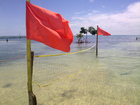- Home
- About Us
- TSPT Academy
- Online Courses
-
Resources
- Newsletter
- Business Minded Sports Physio Podcast
- Day in the Life of a Sports PT
- Residency Corner
-
Special Tests
>
-
Cervical Spine
>
- Alar Ligament Test
- Bakody's Sign
- Cervical Distraction Test
- Cervical Rotation Lateral Flexion Test
- Craniocervical Flexion Test (CCFT)
- Deep Neck Flexor Endurance Test
- Posterior-Anterior Segmental Mobility
- Segmental Mobility
- Sharp-Purser Test
- Spurling's Maneuver
- Transverse Ligament Test
- ULNT - Median
- ULNT - Radial
- ULNT - Ulnar
- Vertebral Artery Test
- Thoracic Spine >
-
Lumbar Spine/Sacroiliac Joint
>
- Active Sit-Up Test
- Alternate Gillet Test
- Crossed Straight Leg Raise Test
- Extensor Endurance Test
- FABER Test
- Fortin's Sign
- Gaenslen Test
- Gillet Test
- Gower's Sign
- Lumbar Quadrant Test
- POSH Test
- Posteroanterior Mobility
- Prone Knee Bend Test
- Prone Instability Test
- Resisted Abduction Test
- Sacral Clearing Test
- Seated Forward Flexion Test
- SIJ Compression/Distraction Test
- Slump Test
- Sphinx Test
- Spine Rotators & Multifidus Test
- Squish Test
- Standing Forward Flexion Test
- Straight Leg Raise Test
- Supine to Long Sit Test
-
Shoulder
>
- Active Compression Test
- Anterior Apprehension
- Biceps Load Test II
- Drop Arm Sign
- External Rotation Lag Sign
- Hawkins-Kennedy Impingement Sign
- Horizontal Adduction Test
- Internal Rotation Lag Sign
- Jobe Test
- Ludington's Test
- Neer Test
- Painful Arc Sign
- Pronated Load Test
- Resisted Supination External Rotation Test
- Speed's Test
- Posterior Apprehension
- Sulcus Sign
- Thoracic Outlet Tests >
- Yergason's Test
- Elbow >
- Wrist/Hand >
- Hip >
- Knee >
- Foot/Ankle >
-
Cervical Spine
>
- I want Financial Freedom
- I want Professional Growth
- I want Clinical Mastery
 As physical therapy students, much emphasis is placed on screening for Red Flags to help determine if a patient is appropriate for our services. Generally speaking, a Red Flag can be defined as a sign or symptom indicating the presence of a serious pathology. In a 2011 article, Davenport and Sebelski defined Red Flags as "abnormalities within the systems review...which may suggest the need for referral to another healthcare practitioner (Davenport 2011)." In this same article, these authors are quick to point out that Red Flags have a low predictive value for forms of pathology. A list of Red Flags commonly seen in the clinic are as follows:
With the profession of physical therapy on the brink of direct access and autonomous care, our ability to correctly determine a patient's appropriateness for therapy is crucial. A recent post from the ForwardThinkingPT outlines a 2013 Cochrane Review regarding the effectiveness of using red flags to screen for malignancy in the low-back pain population. The review assessed 8 cohort studies that specifically addressed 11 Red Flags in the patient's subjective interviews and physical examinations.* Of these 8 studies, which looked at >6000 patients, the symptom of low back pain presented as a more serious pathology <1% of the time. The review found that Red Flags associated with low back pain have high false positive ratings and that the "indication of spinal malignancy should not be based on the results of one single red flag question (Henschke 2013)." Despite the overall low probability of Red Flags, a few studies did find a meaningful increase in probability if the patient had a previous history of cancer. So where does this leave us as practitioners? It is important to consider that the Cochrane review only assessed the impact of 1 Red Flag in its relationship to increasing the chance of malignancy. In the clinic it is important to document Red Flags and use proper judgement if several of them are positive. Because of the high false positive occurrence, Davenport and Sebelski recommend utilizing a diagnostic process to help guide your clinical reasoning. This diagnostic process involves using a symptom based approach for diagnosis. With each patient you should ask yourself, "Among all possible health conditions, what is causing my patient's symptoms (Davenport 2011)?" Obviously this is a loaded question, but the question does stress the importance of having strong differential diagnosis skills. In conclusion, assessing for Red Flags can be a difficult process. Always remember to utilize good communication and practice forward-inductive reasoning to recognize patterns during your examinations. *It should be noted that all 11 Red Flag questions were not indicated in every chart and a possible limitation to the study is inadequate therapist documentation. References:
Davenport & Sebelski. (2011). The Physical Therapist as a Diagnostician: How do we, Should we, and Could we use Information about Pathology in our Practice? Physical Therapy. 2011;91.11. Web. 3 April 2013. Henschke N, Maher CG, Ostelo RWJG, de Vet HCW, Macaskill P, Irwig L. Red flags to screen for malig- nancy in patients with low-back pain. Cochrane Database of Systematic Reviews 2013, Issue 2. Art. No.: CD008686. DOI: 10.1002/14651858.CD008686.pub2. Web. 3 April 2013.
0 Comments
Leave a Reply. |
Dr. Brian Schwabe's NEW Book in partner with PaleoHacks!
Learn residency-level content on our
Insider Access pages We value quality PT education & CEU's. Click the MedBridge logo below for TSPT savings!Archives
July 2019
Categories
All
|






 RSS Feed
RSS Feed